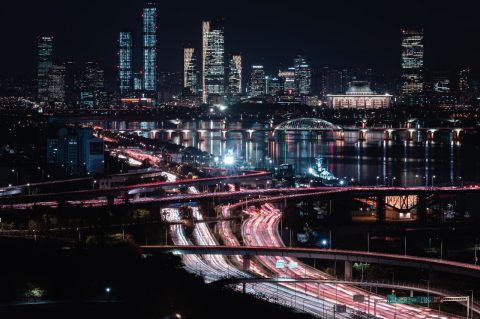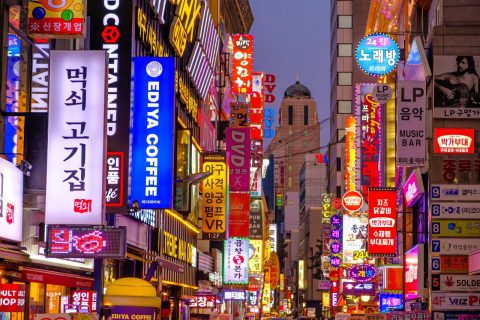Read Before You Leave – Seoul

South Korea’s dynamic capital is a harmonious blend of old and new, offering unique experiences for all types of travellers. Thanks to the Korean pop culture wave, this world-class destination is finally getting the attention it deserves, drawing visitors with its rich history, culture, shopping and incredible places to eat. And while its sheer size can make Seoul seem like an intimidating travel destination, the extensive and inexpensive train system makes it easy to navigate. To get the best out of this sprawling metropolis, here’s our top travel tips to know before visiting Seoul.
Entering South Korea

Australian passport holders may enter South Korea as tourists for up to 90 days without applying for an Electronic Travel Authorization (K-ETA) visa. In 2024, South Korea launched its digital nomad visa, allowing visitors to stay and work in the country for up to two years.
Flying into Incheon International Airport (ICN)
Qantas flies directly to Seoul from Melbourne, Brisbane, Perth, Canberra and Adelaide via Sydney, with a flight time of around 10 hours and 30 minutes from Sydney.
Incheon International Airport is Seoul’s primary and largest airport, located 48 kilometres west of the capital. Seoul is vast, so your choice of transport will depend on the location of your accommodation. There are various ways to travel from ICN to downtown Seoul, with the most convenient options being the Airport Railroad Express (A’REX), Seoul Metropolitan Subway, airport limousine buses and taxis.
The A’REX is the quickest and most affordable option, taking between 43 and 51 minutes to reach downtown Seoul, with tickets priced at KRW 11,000 (about $12.60) for adults and KRW 8000 (about $9.16) for children. You can also organise car hire prior to arrival or at the airport.
Weather wise
Seoul has a temperate climate characterised by dry, cold and mostly clear winters and hot, wet and partly cloudy summers. The monsoon season is from late June to late August. Spring and autumn are mild but short in duration and are considered the ideal seasons to visit the city, temperature-wise.
SEE ALSO: 13 Reasons You Need to Explore South Korea
When to go

There’s something unique to discover in every season in Seoul, so the best time to visit depends on the experiences you’re looking for. Summer has historically attracted the most international visitors, but spring and autumn have become increasingly popular times to visit due to the ideal weather. In spring, vibrant pink cherry blossoms are in bloom, while in autumn, the city is swathed in rich yellow, orange and red hues. In September, the Seoul International Film Festival is an essential stop on any itinerary.
Despite below-freezing temperatures and snowfall, Seoul is beautiful in winter and is a magical time to visit if you like to avoid crowds and take advantage of low-season (December-February) discounts. Korean New Year takes place between late January and mid-February and in the lead-up to the holiday, travellers can expect celebrations and traditional performances at folk villages and palaces, making it a special time to visit.
Dress code
Koreans are generally relaxed about attire, so feel free to dress for the weather and for comfort. However, the locals’ attire leans more towards modest, so it’s safest to leave more risqué choices at home. If you’re visiting temples, keep in mind that shorts are OK but tank tops and miniskirts are not. Respect the local culture and cover up your shoulders and décolletage. It is also considered rude to wear sunglasses while talking to people.
Stay central

Seoul is a city without a true centre; it’s spread out into various districts, each with its own personality and vibe. As it is one of the largest cities in the world, staying in one of the more popular districts in the heart of the city is a good choice. Myeongdong is a great place to stay if you love shopping and want to be close to plenty of restaurants and bars and Gangnam, in the central downtown area, is known for its buzzy nightlife.
Gadgets
Power sockets in South Korea operate on a 220V supply voltage and 60Hz (the same as in Australia), so all gadgets and chargers should work without a problem. Travellers will need a power adapter as the sockets and plugs are different to Australia’s.
Handy apps and websites
- The Australian Embassy in Seoul for emergencies.
- Smart Traveller for safety information.
- XE for currency conversion.
- Naver Papago for whenever you need translation during your travels.
- Korea Tourism Organization for tourist information.
- A’REX to check Airport Express times.
- KakaoMap for directions to restaurants and local attractions.

Start planning now
SEE ALSO: 25 of the Best Things to Do in Seoul
Image credits: Stephan Valentin; Geumdwaeji Sikdang


